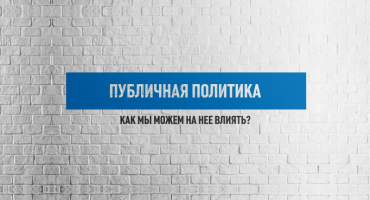Can you distinguish a negatively evaluated hate language in texts, sayings, quotes, that is, permissible from the point of view of freedom of expression, and hate speech, which qualifies as illegal content, the publication of which can entail sanctions, up to criminal punishment?
If you answered yes to this question, you should not read this article till the end, since you are probably a highly qualified specialist in the field of language expertise.
However, journalists and creators of online content in Central Asia often argue on this issue and find it difficult to come to a single conclusion. Even a deep study of international documents on the language of hostility and xenophobic rhetoric in the media does not give a clear understanding of this problem.
WHAT IS IT RELATED TO?
- The term “hate language” is not mentioned anywhere in the laws of Central Asian countries. However, international journalism standards recommend that reporters abandon the use of the “hate language” so as not to stimulate various types of intolerance. This is indicated in various international and European codes of conduct and the new network ethics. [1]
- In world practice, illegal forms of “hate language” are referred by qualification as anti-discrimination laws. There, the basic concept is public incitement to hatred. It is based on the terminology of international law and clearly criminalizes statements that encourage dangerous acts that can have serious consequences. Therefore, in many countries, journalists have a clear concept of what is an illegal hate language, and what is negatively assessed and permissible in terms of freedom of expression.

Illegal hate language – these are forms of speech expression and visual content, most often in the online sphere, which are discriminatory and incite violence to any group. Most often, designs that contain the illegal language of hostility are intentionally distributed and removed by the decision of companies that track content on the Internet.
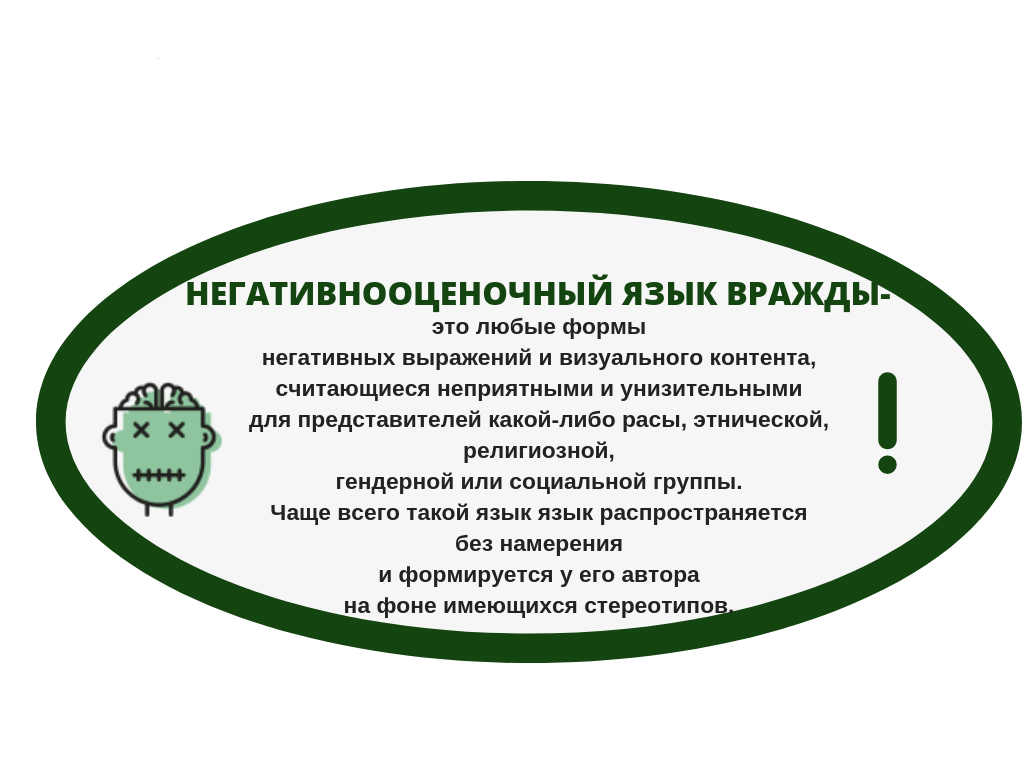
A negatively evaluated hate language is any form of negative expression and visual content that is considered unpleasant and humiliating for representatives of any race, ethnic, religious, gender, or social group. Most often, such a language is distributed without intention and is formed by its author against the background of existing stereotypes.
3. In Central Asian countries there are no anti-discrimination laws in such forms, and some laws use vague interpretations of articles that theoretically can qualify illegal forms of hate speech.
4. There are a number of articles in the criminal laws of Central Asian countries that stipulate liability for certain types of “incitement of hostility or hatred and propaganda committed publicly or using the media and the Internet” . Therefore, in law enforcement practice, sometimes journalists and creators of online content are faced with accusations of “inciting hatred or enmity,” mainly when quoting, expressing opinions or copying visual images.
5. In addition, articles on incitement of hostility or hatred are identically reflected in some local anti-extremist laws, which also indicate sanctions for such activities. Such an interpretation has created a practice where some public contradictory statement, including in a report / comment / post on sensitive topics, containing such a quote can be qualified as illegal content
Legislation of Central Asian countries on inciting hatred and hostility, and sanctions provided for such acts:

| Country | Articles and their rationale | Sanction |
| Kazakhstan | Article 174 of the Criminal Code of Kazakhstan. “Institution of social, national, generic, racial, class or religious discord.” Intentional actions, directed to institution of social, national, generic, racial, class or religious hatred, insult of the national honor and dignity or religious feelings of citizens, as well as propaganda of exclusivity, superiority or inferiority of citizens on grounds of their relation to religion, class, national, generic or racial assignment, if these actions are committed publicly or with the use of mass media or information and communication networks, as well as by production or distribution of literature or other information media, promoting social, national, generic, racial, class or religious discord. | Restriction of liberty for a term of two to seven years or imprisonment for the same term |
| Kyrgyzstan | Article 313 of the Criminal Code of Kyrgyzstan “Arousal of racial, ethnic, national, religious or inter-regional hostility (hatred)” Actions aimed at inciting racial, ethnic, national, religious or inter-regional hostility (hatred), humiliation of national dignity, as well as propaganda of exceptionality, superiority or inferiority of individuals on the basis of their attitude to religion, national or racial belonging, if these acts have been committed in public or with the use of the mass media, as well as through the Internet. | Category 3 imprisonment (from 5 to 7.6 years) |
| Tajikistan | Article 189 of the Criminal Code of Tajikistan. “Arousing National, Racial, Local or Religious Hostility” The actions, which lead to arousing national, racial, local or religious hostility, or dissension, humiliating national dignity, as well as propaganda of the exclusiveness of citizens by a sign of their relation to religion, national, racial, or local origin, if these actions were committed in public or using means of mass media. | Restriction of liberty for a term of up to five years or imprisonment for the same term |
| Turkmenistan | Article 177 of the Criminal Code of Turkmenistan. “Institution of a Social, National or religious hatred.” Intentional actions aimed at excitement social, national, ethnic, racial or religious hatred or discord, humiliation of national dignity, as well as propaganda exclusivity or inferiority of citizens on the basis of their religion, social, national, ethnic or racial accessories, including those made using the mass media. | Fine or imprisonment of up to four years |
| Uzbekistan | Article 156 of the Criminal Code of Uzbekistan. “Arousal of National, Racial, Ethnic or Religious Enmity” The manufacture, storage for distribution or distribution of materials, propagandizing national, racial, ethnic or religious hatred; Deliberate acts degrading national honor and dignity, insulting feelings of citizens in connection with their religious or atheistic conviction, committed with the purpose of inciting hostility, intolerance or hatred towards population groups in national, racial, ethnic or religious grounds, as well as direct or indirect restriction of rights or the establishment of direct or indirect advantages in depending on their national, racial, ethnicity or religion. | Imprisonment from two to ten years |
HOW TO DIFFERENTIATE – ILLEGAL FROM NEGATIVELY EVALUATED HATE LANGUAGE?
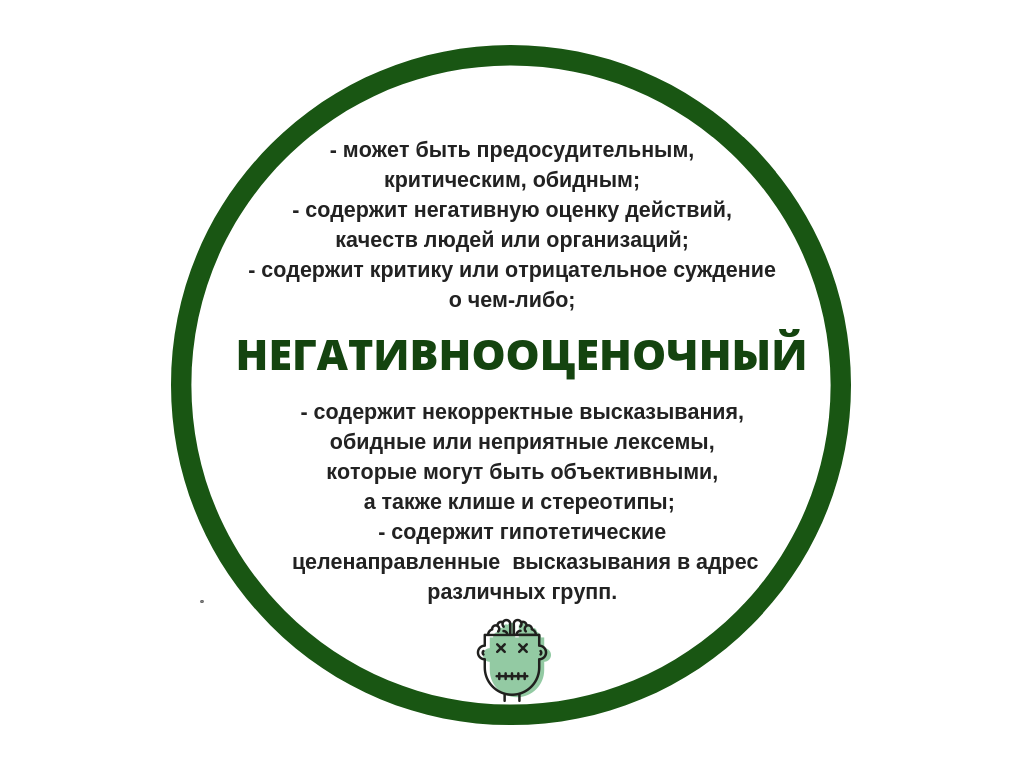
Negatively evaluated
-can be reprehensible, critical, offensive
– contains a negative assessment of the actions, qualities of people or organizations
-contains criticism or negative judgment about something
– contains incorrect statements, offensive or unpleasant tokens that may be objective, as well as clichés and stereotypes
-contains hypothetical purposeful statements addressed to various groups.
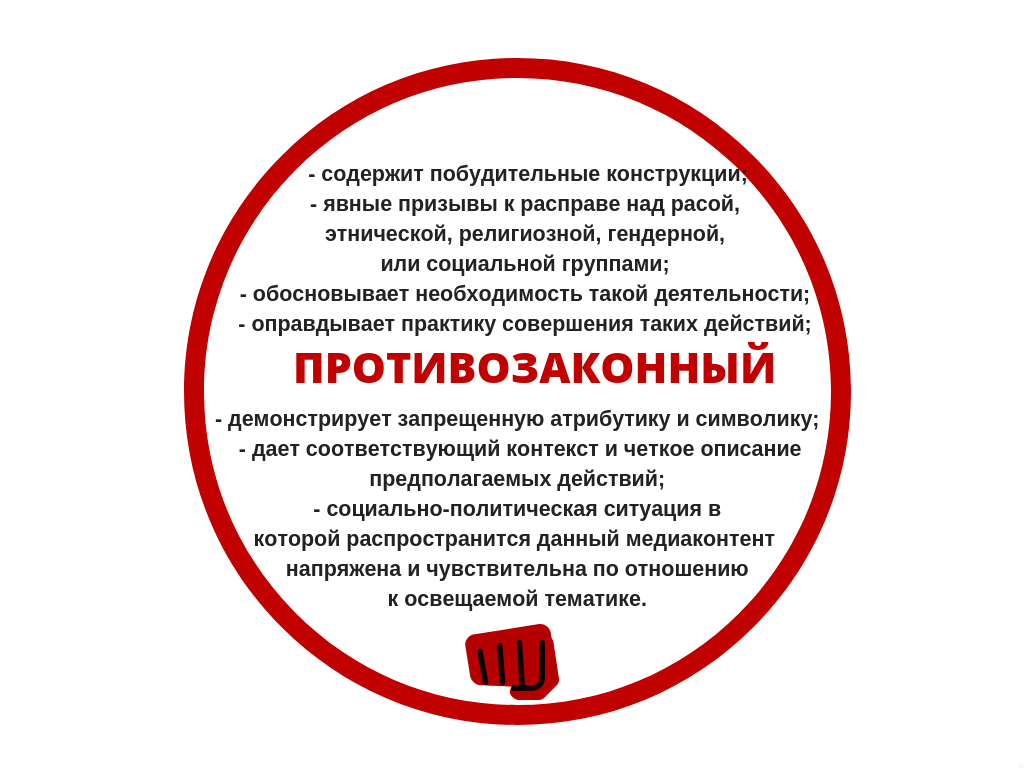
Unlawful
– contains incentive structures
– explicit calls for reprisal against race, ethnic, religious, gender, or social groups
– justifies the need for such activities
-justifies the practice of such actions
– demonstrates prohibited attributes and symbols
-gives an appropriate context and a clear description of the proposed actions
The socio-political situation in which this media content is distributed is tense and sensitive to the topics covered.
IMPORTANT:
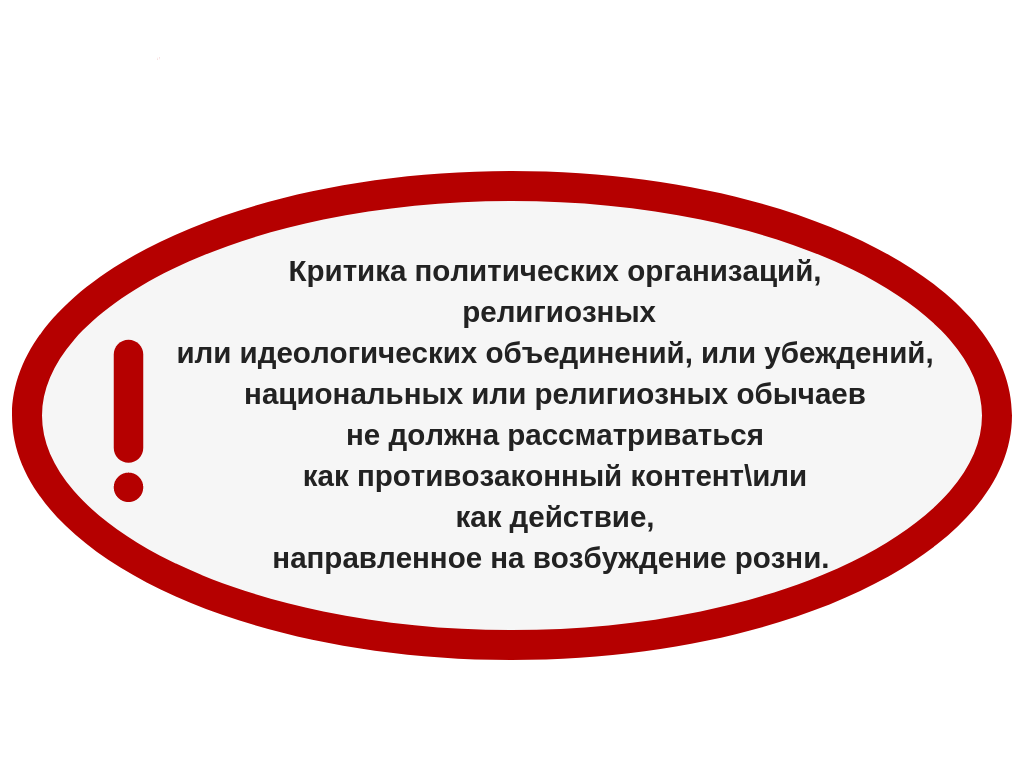
Criticism of political organizations, religious or ideological associations, or beliefs, national or religious customs should not be regarded as illegal content / or as an act aimed at inciting hatred.
- From the point of view of international standards, if at first glance in a statement, quote / article / audiovisual product ( where there are some evaluative clichés and stereotypes in relation to race, ethnic, religious, gender, social group ) there are no incentive linguistic constructions, there are no obvious (not hypothetical!) calls for reprisal against the group, there is no corresponding context, i.e. a clear description of the proposed actions, and the socio-political situation in which this media product is distributed is not sensitive to the topics covered – such content is a negative evaluation form of hate language and, therefore it is legal.
- If the statement, quote, article you created or the audiovisual product contains such incentive structures as: “hit”, “burn”, “kill”, “explode” with a specific description of such alleged actions, with justification for their necessity, also supported by such phrases as “it would be desirable”, “necessary”, “required”, “needed” and focus on a clear indication of the object (not in general, but specifically) – this can qualify as illegal content.
- If your statement, quote, article you created, or an audiovisual product has a positive assessment of the actions already performed, recognition of them as correct by indicating that there are significant reasons, justifications and the correctness of the chosen action, which indirectly, and not directly, may prompt similar actions in the future; there are logical connections in the media text, a positive assessment of people who are negatively assessed by others – this can qualify as illegal content justifying the need for extremist activity.
- Actions denoting incitement to infighting, hostility or hatred should be understood not as simple statements that hypothetically may seem humiliating or insulting, but statements justifying or affirming the need for wars, religious or other extremism, deportation, genocide, violence against any racial , ethnic, religious, gender, social group, incitement to restrict the rights of this group. Therefore, many people often confuse illegal content with a non-criminal language of hostility, which means intolerant, negatively evaluative statements in relation to certain people.
HOW TO NOT MAKE A MISTAKE
IN ORDER NOT TO ACCIDENTALLY USE ILLEGAL CONTENT?
1
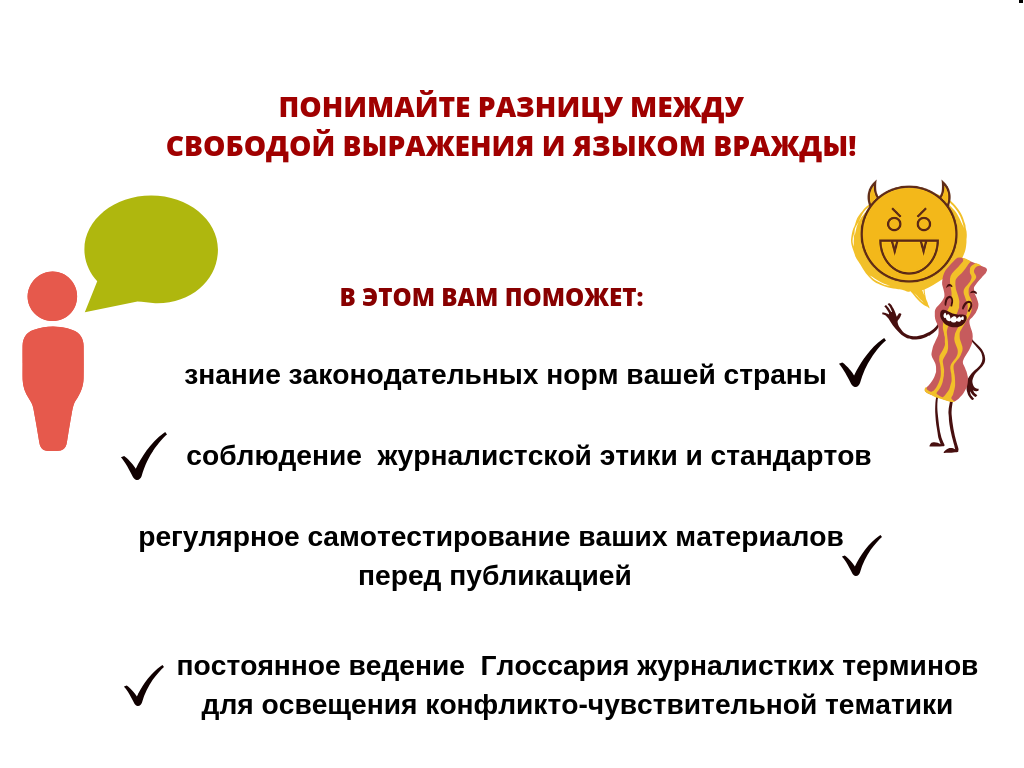
USE THE TOOLS OF “SLOW JOURNALISM”
THE FOLLOWING WILL BE HELPFUL IN DOING SO:
– multistage editing of materials on a conflict-sensitive topic: let your material be read or watched by as many of your colleagues as possible before publication:
-delete unnecessary details from your media texts so as not to create a negative perception of the described groups; do not make a headline sensation by identifying groups
– if you write features, it is better not to use humorous art forms on the themes of race, ethnicity, religion, gender identity and other signs
– if you think that some quotation, or an example that you are going to describe, may seem racist or xenophobic, then this is absolutely true – journalistic intuition is never wrong
– Focus not on what you are writing, but on who it is intended for.
2
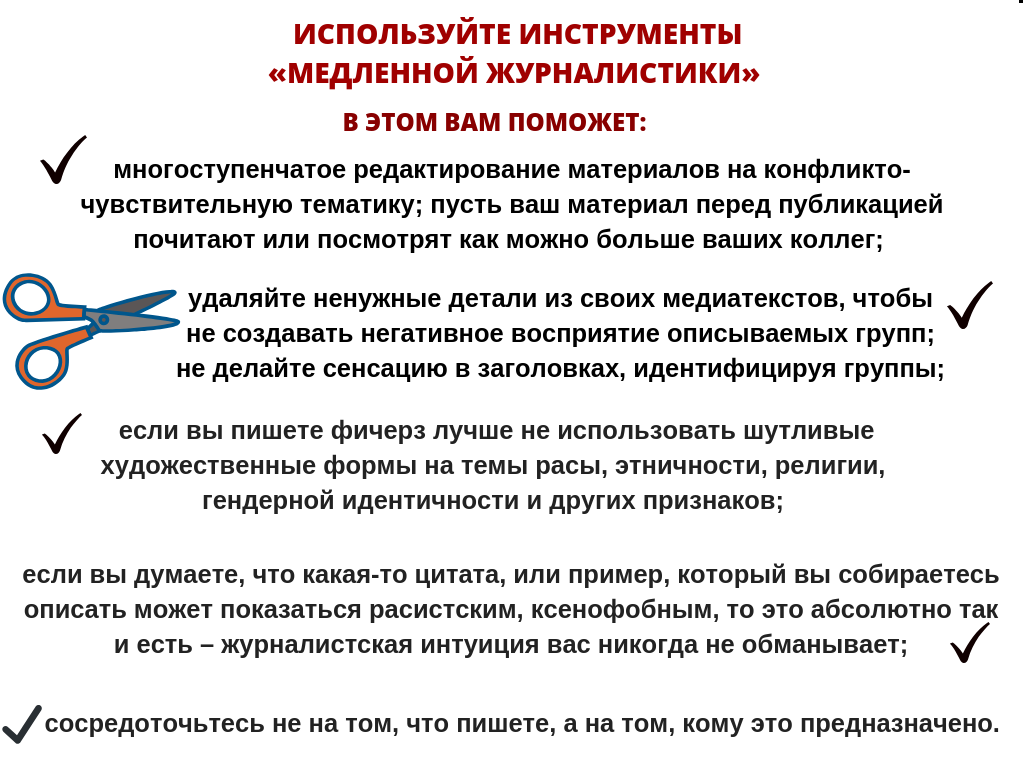
UNDERSTAND THE DIFFERENCE BETWEEN FREEDOM OF EXPRESSION AND HATE LANGUAGE!
THE FOLLOWING WILL HELP YOU IN DOING SO:
-knowledge of the laws of your country
-compliance with journalism ethics and standards
– regular self-testing of your materials before publication
-containing a glossary of journalistic terms for coverage of conflict-sensitive topics
Check yourself:
Quiz Maker – powered by Riddle
Quiz Maker – powered by Riddle
[1] CODE OF CONDUCT ON COUNTERING ILLEGAL HATE SPEECH ONLINE, URL https://ec.europa.eu/info/sites/info/files/code_of_conduct_on_countering_illegal_hate_speech_online_en.pdf
[2] Criminal Code of Kazakhstan, 2014 https://online.zakon.kz/Document/?doc_id=31575252&doc_id2=31575252#activate_doc=2&pos=223;-458&pos2=2359;-444
[3] Criminal Code of Kyrgyzstan, 2019 http://cbd.minjust.gov.kg/act/view/ru-ru/111527
[4] The Criminal Code of Tajikistan, 1998, http://base.spinform.ru/show_doc.fwx?rgn=2324
[5] The Criminal Code of Tajikistan, 1998, http://base.spinform.ru/show_doc.fwx?rgn=2324
[6] Criminal Code of Uzbekistan, 1994, https://abortion-policies.srhr.org/documents/countries/05-Uzbekistan-Criminal-Code-1994.pdf
If you have found a spelling error, please, notify us by selecting that text and pressing Ctrl+Enter.





